- Well, we finally sold our 2023 Fisker Ocean Extreme.
- We got $10,000 for this electric SUV, which equates to a running cost of $7.78 per mile.
- We had one last struggle with the Ocean before it actually left our garage.
We Finally Sold Our Fisker Ocean for $10,000
It would've been cheaper to Uber — seriously
Hey, remember our Fisker Ocean? You know, the electric SUV we bought for just under $70,000 in early 2024. The one made by the company that went bankrupt. The one that threw error codes the day we bought it. The one that wouldn't lock or unlock. The one that wouldn't start. The one that, if it started, wouldn't shut down. The one that thought we were in Alaska. The one that would slam on the brakes out of nowhere. The one with the forward-facing sensors that deactivated in direct sunlight or rain. The one that wouldn't recognize its own key fob. The one with a fob that would die every two months. The one that would roll backward like an old car with a manual transmission. The one with heated seats that would only work sometimes. The one with the air vents that wheezed and clicked. The one with door handles that wouldn't retract. The one where we had to pull off the front fascia just to manually open the hood when the 12-volt battery died. And the one that, after less than a year of ownership, ultimately lost more than 80% of its value.
Yeah, that one. We finally sold it. For $10,000.
$10,000?!
Yes, $10,000. That means it lost $3,000 in value from the last time we had it appraised in November, which is especially heinous considering we didn't drive it more than a couple of miles over the past six months. Why the wait to dump our Ocean? I'll get to that in a moment. Right now, let's talk about our cost of ownership.
We bought the Ocean for $69,012 and sold it for $10,000 even, meaning we spent $59,012 to operate the vehicle over its lifetime. During that span, we put 7,583 miles on the electric SUV, so by that math, the Ocean cost us $7.78 per mile. And that doesn't include extra costs like insurance and electricity.
To put that into context, it's a 22-mile drive from the Edmunds office in Santa Monica, California, to my home in northeast Los Angeles. A round-trip commute from home to work and back would've cost $342.32 in the Ocean. Now, let's check Uber, a popular ride-hailing app. As of this moment — 7:49 a.m. PT on Tuesday, June 3 — that same round trip would cost $181.87. If I felt like upgrading to Uber Black (oooh, you fancy), the trip would cost $324.05. Both are less expensive than the theoretical cost of the Fisker, and in both cases, I wouldn't have to deal with the constant driver assistance failures. (Plus, it'd give me a chance to do today's Wordle.)
What took you so long to sell the Ocean?
Well, first, we had a small issue where the registration had expired. (Hey, no one was driving the thing.) But then a bigger problem occurred: The 12-volt battery died. No problem, right? Just pop the hood and charge it, right? Oh, don't be silly. This isn't a normal car — this is a Fisker!
Because everything in the Ocean is electronic, the car wouldn't unlock. We even replaced the battery in the quick-to-die key fob, but nothing worked. We pried the driver's door handle out of its holding place and tried to manually open the car using information found in the online manual (it should've recognized the fob and worked), but that didn't do it either. Finally, we consulted online Fisker forums full of owners who've had the same problem, and the actual solution turned out to be quite complicated.
We ended up having to pry one off one of the Ocean's front fascia panels, behind which we found a pair of screws for the hood latch. We removed those, and the hood opened up — and we used that fascia panel to hold it in place, since there's no hood prop. Then it came time to actually charge the battery, which we attempted with a portable jump-start box. The 12-volt battery drained the jump box immediately, which wasn't long enough to provide sufficient electricity to unlock the doors but was enough to set off the piercingly loud car alarm. (Fun!) Eventually, we charged the battery with another vehicle in the Edmunds garage, and that got the Fisker up and running.
Was this a final middle-finger gesture from our ailing Ocean or just another item to add to the Fisker's long list of quibbles? Honestly, who cares? We're just glad this thing is finally gone.
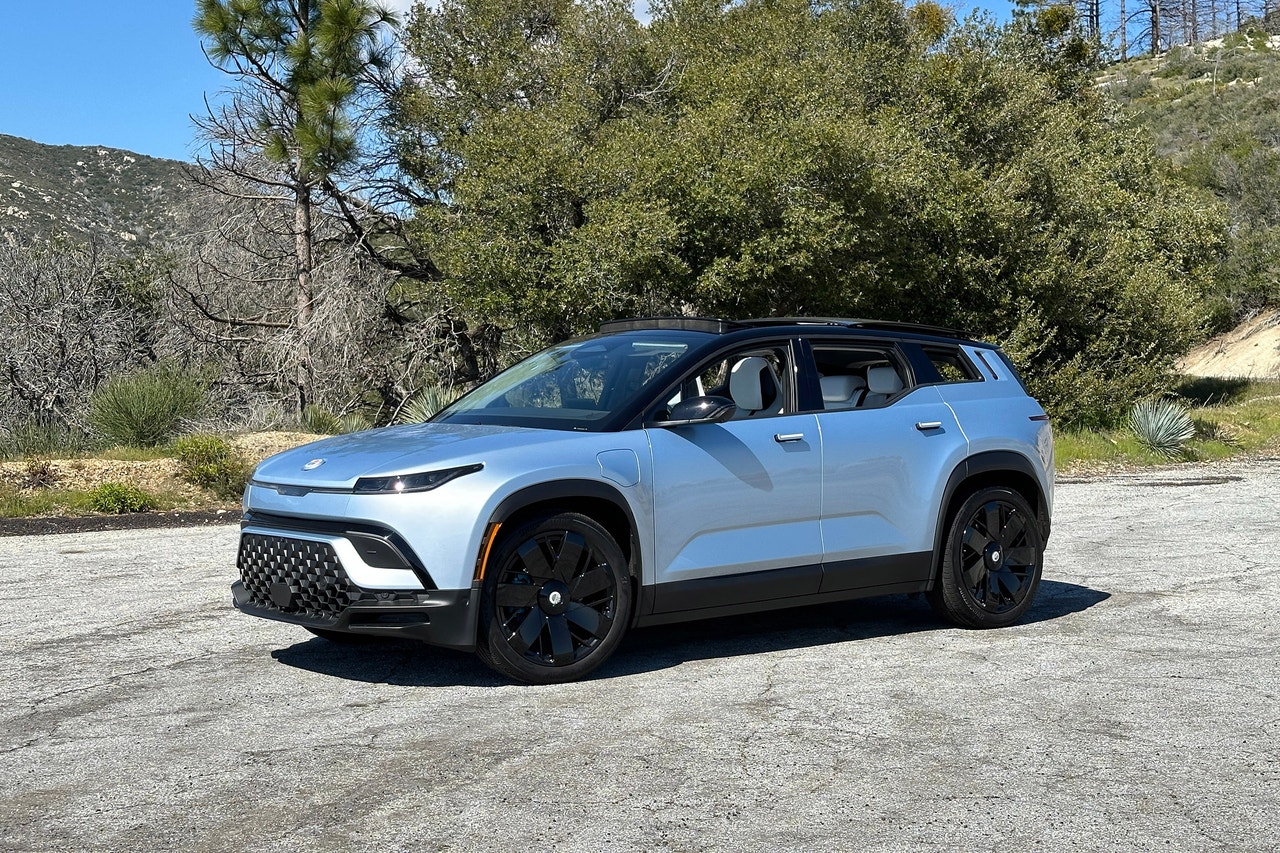


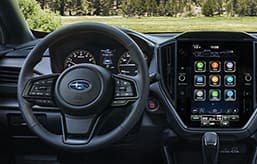

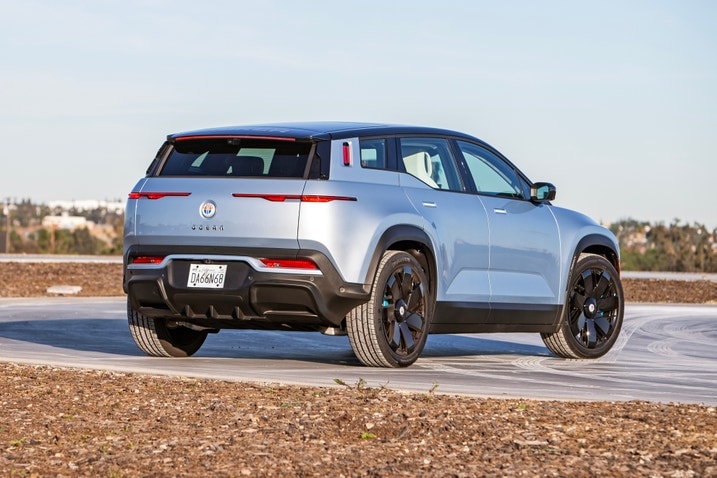
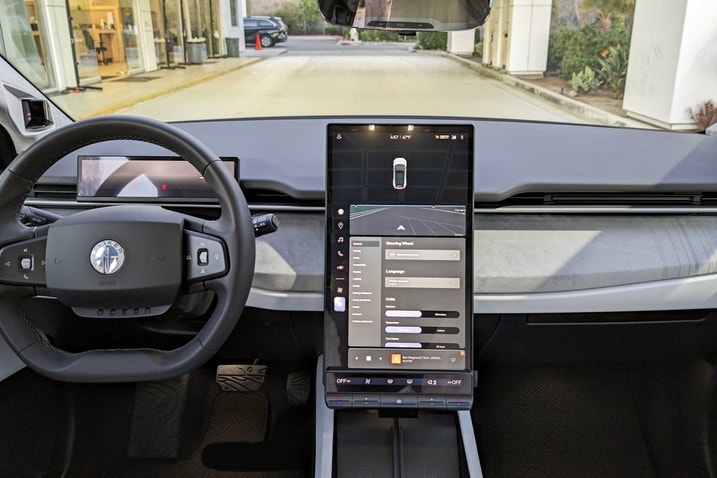
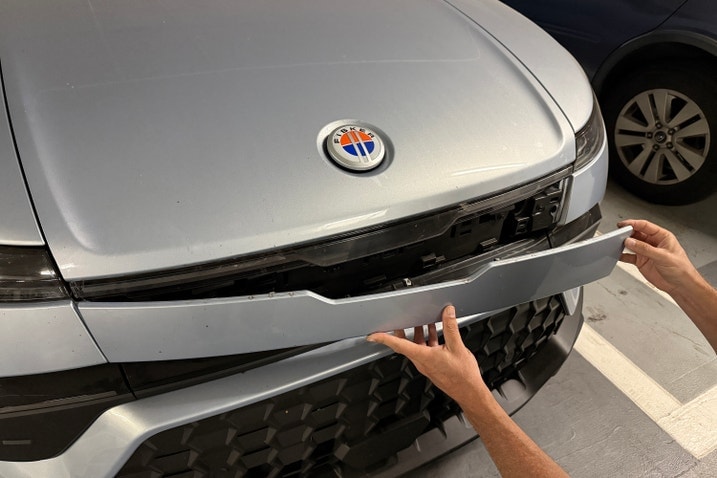
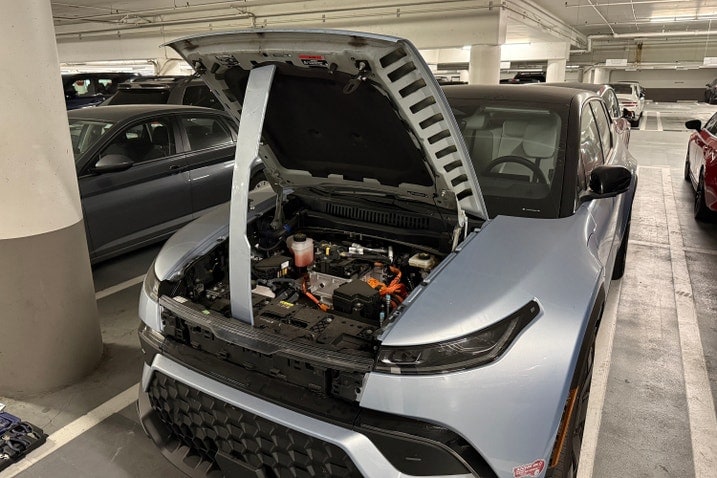
 by
by  edited by
edited by